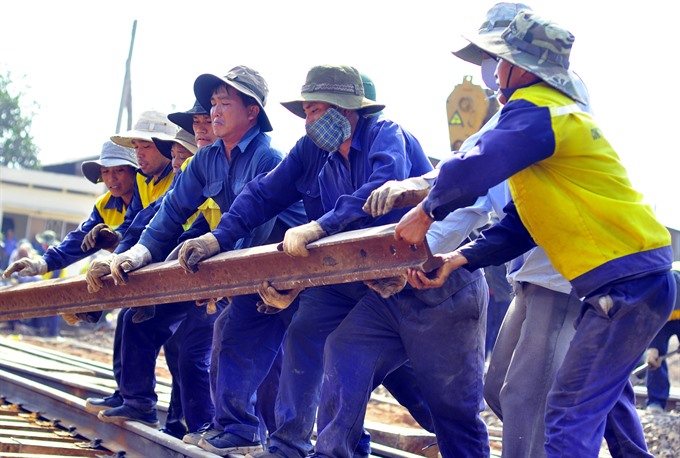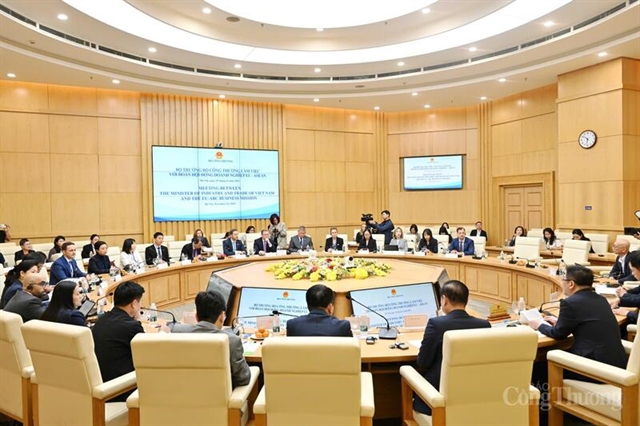 Society
Society

With labour migration on the rise across ASEAN, countries like Việt Nam, which sends a large number of workers abroad and relies on remittances for 7 per cent of its GDP, should strengthen protections for workers while lowering barriers to their mobility, argues a new World Bank report released yesterday in Singapore.
 |
| Workers installing new rail lines. Construction is one of the sectors receiving the most migrant workers across ASEAN. – VNA/VNS Photo: Công Phong |
SINGAPORE – With labour migration on the rise across ASEAN, countries like Việt Nam, which sends a large number of workers abroad and relies on remittances for 7 per cent of its GDP, should strengthen protections for workers while lowering barriers to their mobility, argues a new World Bank report released yesterday in Singapore.
The report, “Migrating to
Labour migration rose significantly between 1995 and 2015, with
But migrant workers are often vulnerable, and policies across the region do little to address their needs. According to UN data, 80 per cent of intra-ASEAN migrants are low-skilled and many of them are undocumented. Contruction, plantation and domestic services are the sectors that receive most of migrant workers.
Current challenges facing migrant workers include lack of protections for migrant workers, high recruitment costs at recruitment centers, costly and lengthy migration procedures, migration quotas and domestic employment policies that prevent workers from easily changing jobs.
Since migrant workers often find themselves at the mercy of recruitment agencies that promise to find them jobs abroad, Việt
Meanwhile, receiving countries should tightly manage their migration system to quickly respond to labour market demand and guarantee that local workers’ wages and working conditions are not changed as a result of an influx of migrants.
“Migrating to Opportunity” was delivered by World Bank Chief Economist for East Asia and the Pacific Sudhir Shetty and Mauro Testaverde, lead author and economist for the World Bank’s Global Practice for Social Protection and Jobs at a press conference in
The presentation was telecasted at regional World Bank country offices. – VNS




